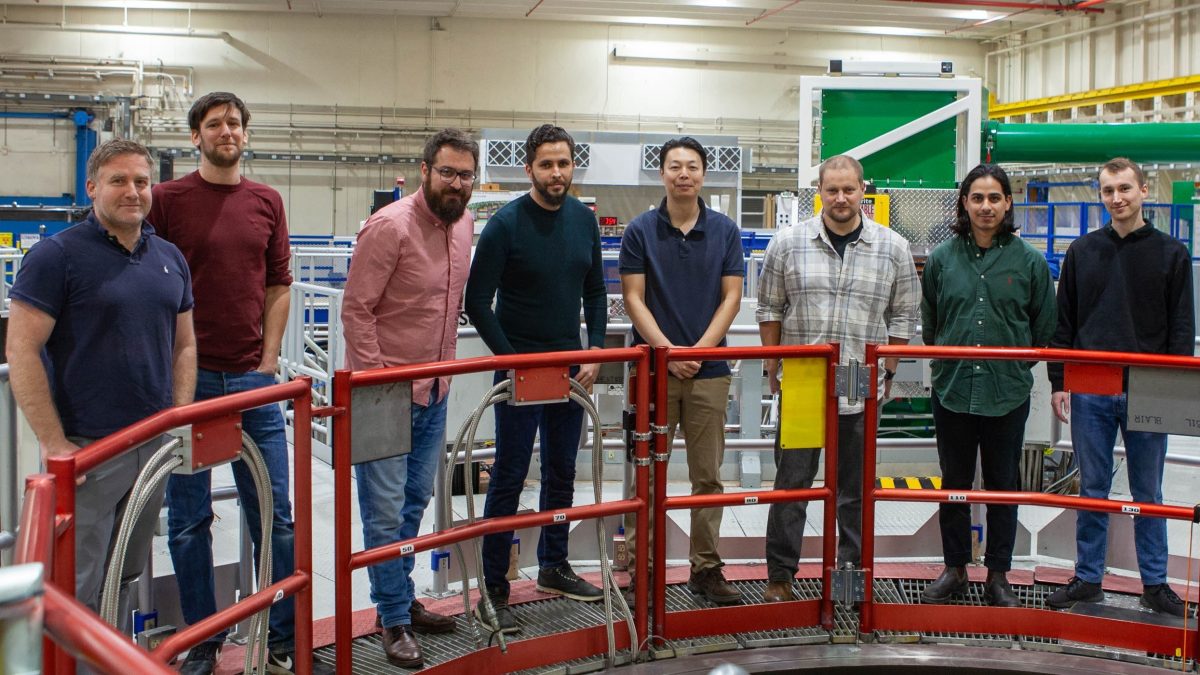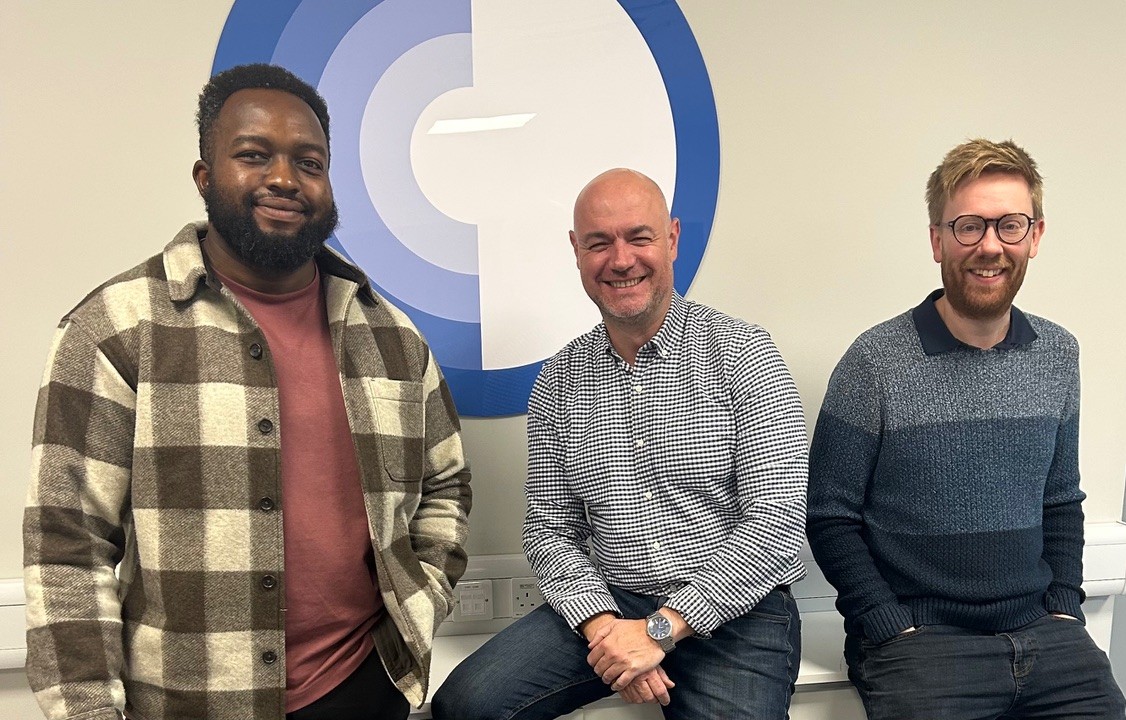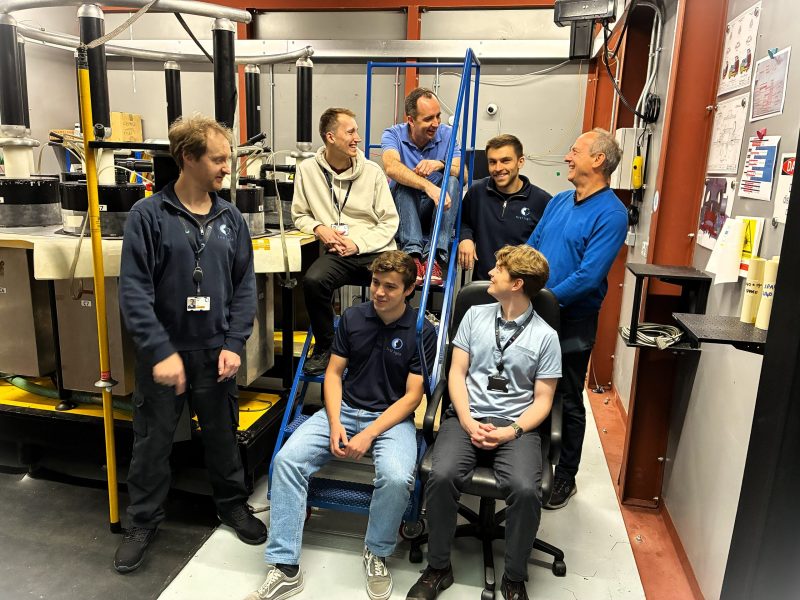- First Light is the first privately funded fusion company to fire a shot on the Sandia National Labs ‘Z Machine’
- The shot sets new pressure record for Sandia and strengthens the case for First Light’s unique amplifier technology
- Demonstrates the wider applicability of First Lights technology across driver technology platforms
- The experiment deepens First Light’s ongoing partnership with Sandia National Laboratories, and helps the UK fusion leader to continue developing its unique amplifier approach to inertial fusion
7 March 2024: Oxford, UK – First Light Fusion (“First Light”), the world’s leading inertial fusion start-up, has become the first ever private fusion company to “fire” a shot on the Sandia National Laboratories ‘Z Machine’ in New Mexico US.
The Z Machine is the most powerful pulsed power facility in the world. With a peak power of 80 trillion watts, more than the worlds entire electricity grid, it electromagnetically launches projectiles to higher velocities than any other facility in the world. These are used to impact samples of material, testing their properties at extreme pressures. First Light has combined this incredible machine with its amplifier technology, breaking a long-standing pressure record for the facility.
Dr Nick Hawker, Founder & CEO of First Light Fusion, said:
“We are delighted to report that our first shot on the Z Machine was a resounding success – breaking the pressure record for the facility and further validating the value that First Light’s unique amplifier technology. Our ongoing partnership with Sandia and access to its state-of-the-art Z Machine enables us to test our unique amplifier technology at pressures we can’t access anywhere else in the world. To achieve success on the first shot is a testimony to the quality of our simulation, design, manufacturing, and experimental teams. Testing at higher pressures is incredibly important as we seek to push the limits of what our amplifiers can do. We look forward to breaking the pressure record again later this year.”
The success of the first shot at Sandia is a considerable scientific landmark for First Light. It proves First Light’s target technology works across driver platforms and specifically on the most powerful pulsed power machine in the world. This validates that the core technology scales in line with simulations and highlights the experimental capability of First Light’s team. The success of the shot positions First Light as a leader in real-world high-energy density physics, giving the company (and the wider inertial confinement fusion community) a boost in the quest to deliver commercial fusion power.
Dr Daniel Sinars, Director, Pulsed Power Sciences Center, Sandia National Laboratories, said:
“These joint experiments were conducted as part of Sandia’s Z Fundamental Science Program, which permits potential academic and industry collaborators to propose basic science experiments on the Z machine. Proposals undergo a competitive review process involving non-Sandia referees and we typically award about 14 shots annually. This proposal was intended to advance our knowledge of the response of quartz at high pressures, which is important because quartz is a standard window material used on many of materials experiments on Z, NIF, and Omega. Getting a successful result on this first-ever experiment is a testament to the joint team’s excellent experimental design and careful attention to its execution. Continued success along these lines could lead to new platforms for stockpile stewardship materials experiments on Z. Sandia is also working with the National Nuclear Security Administration on a potential path forward for conducting more applied experiments with fusion energy companies under the auspices of Cooperative Research and Development Agreements (CRADAs) beginning in 2025.”
Projectile fusion
First Light is pursuing a form of inertial confinement fusion called projectile fusion, which creates the extreme temperatures and pressures required to achieve ‘fusion’ by compressing a target containing fusion fuel using a projectile travelling at a tremendous speed. This differs from approaches pursued by other mainstream fusion companies in that it doesn’t involve using complex, energy-intensive, expensive lasers, or magnets. Without the need for hugely complex and expensive lasers to facilitate the fusion reaction, this is a simpler, cheaper, more energy-efficient approach to achieving fusion with lower physics risk.
Key to First Light’s approach is its amplifier technology which is broadly applicable across different driver technologies. The amplifier massively increases the pressure delivered from the impact of the projectile, necessary to achieve fusion. First Light leveraged the vast power of Sandia’s Z Machine for the first time in February to fire a projectile at its unique amplifier technology.
New record in quartz pressure at Sandia’s facility
First Light’s successful experiment set a new pressure record for quartz at Sandia’s facility, lifting it from 1.5 terapascal (TPa) to 1.85 TPa, whilst also maintaining the sample conditions required for high precision measurements for which the Sandia Lab is world-recognised. The experiment provided valuable insight into amplifier development giving the team considerable confidence in its modelling and simulations. The shot also proves that First Light’s hydrodynamic amplification technology works when driven by different types of projectiles. It allows measurements of material behaviour at extreme pressures previously unattainable on this facility, such as can be found in planetary cores or inertial confinement fusion targets.
Work is now underway to increase this pressure further as First Light continues to explore the ultimate potential of its unique amplifier technology. The UK fusion leader will fire its next shot on the Z Machine at the end of this year when further progress is expected.
First Light has been awarded three shots in total on the Z Machine, as part of its ongoing partnership with the US-government funded research organisation. The experiments form part of Sandia’s ‘Z Fundamental Science’ programme and follows the successful demonstration of the platform on SNL’s STAR 2SLGG last year.



